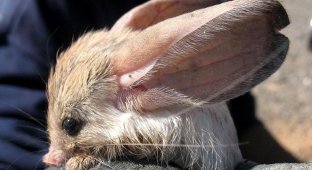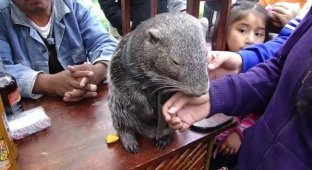Long-eared jerboa: a miracle from Mongolia. A predatory rodent with giant ears (7 photos)
Meet the long-eared jerboa, the most atypical representative of the rodent order. By the will of fate and evolution, it became so different from its relatives that it was included in the list of "100 animals that you must see before you die." They are like wonders of the world, only woolly. 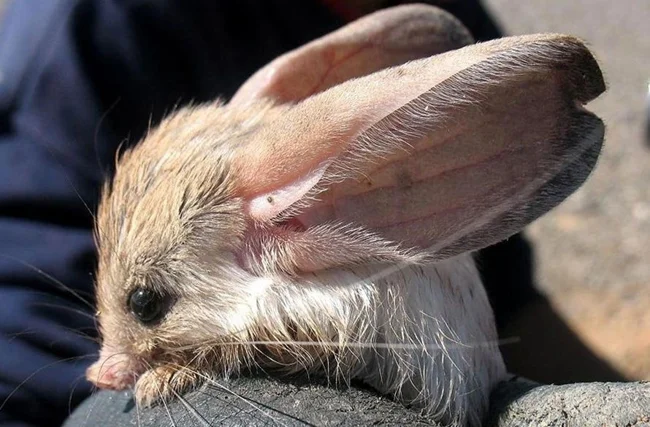
No, not Photoshop. Yes, real. Just imagine what it's like to hold such a miracle in your hands!
Look: a tiny fluffy carcass half the size of a palm. On one side, a giant 15-centimeter thin tail-whip sticks out of it, and on the other - disproportionately huge ears. So you understand: the jerboa's body length is 9 centimeters, and the length of the ears is up to 6! For the impressive size of the locators, the animal was even nominated for the title of "the longest-eared animal." And this whole strange structure is held on thin legs, like a kangaroo. Definitely, the animal is worth seeing at least once in real life! 
It's just cold now, that's why they've shrunk!
To do this, go to China or Mongolia and stomp into the deserts. Of course, you won't need 40 years, but you'll have to wander for a long time. The jerboa spends most of the day in its hole, escaping from the scorching heat. And trying to dig the animal out of its shelter is useless. 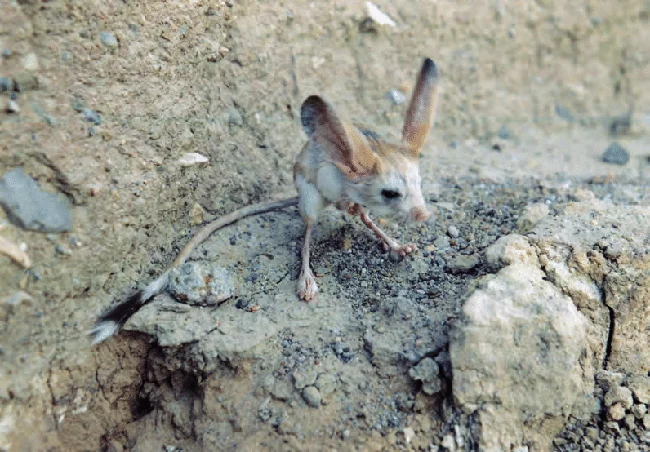
When all your friends pull your ears on your birthday.
While we're gnawing out the best interest rate on a mortgage, our hero is gnawing out a living space in the rocky desert soil with his teeth. But the jumper owns several holes at once. 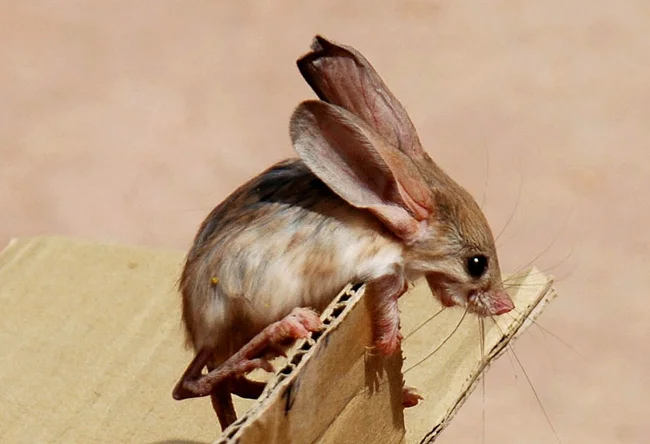
Ha-ha, a cardboard box on a mortgage. It's better to live in a hole!
Some holes are transit holes, in case of a sudden attack by a predator. The rodent waits out the danger there if it senses that it is being hunted. The second ones are larger - for daytime sleep. The third ones are very large and deep, with underground rooms. This is for a comfortable time with the cubs and for winter hibernation. Moreover, each shelter is equipped with a back exit. In case of trouble, the animal will go out through the spare hole and jump into the sunset. 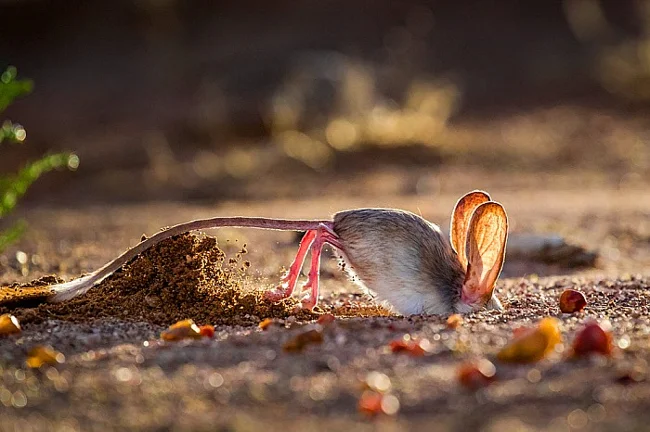
When I finally shaved my legs after winter.
That's why it's best to look for a jerboa in the evening, closer to night. After sunset, the rodents get out of the bunker and make a round, or rather, a run around their territory. At the same time, the prey of the long-eared jerboa crawls out onto the surface of the cooled sand, which means this is the perfect time for hunting! Yes, while other species of jerboas chew exclusively bark, twigs and skinny leaves of desert vegetation, our hero has changed his food orientation by 180°. He has become a predator! His menu includes small insects and spiders of the wastelands. For rodents in general and jerboas in particular, this feature is, to put it mildly, not typical. 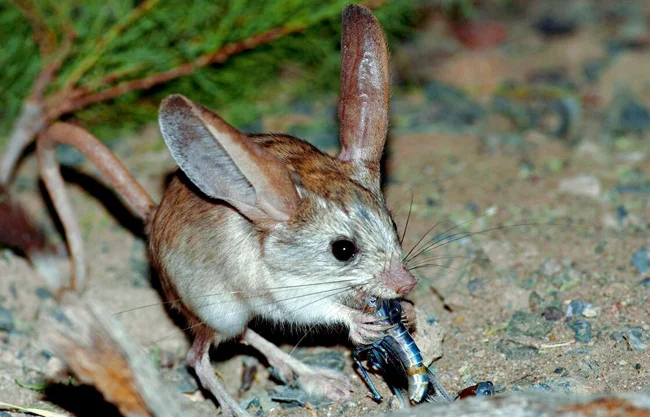
We understand you, jerboa, we all love to sharpen something meaty and fatty in the middle of the night!
Giant ears help the rodent find bugs scratching on the sand in pitch darkness. They also help the jerboa catch danger signals - the jerboa itself is also easy prey. True, almost no one catches it. Chasing a perceptive little thing weighing 30 grams through the desert, most of which is on long bony paws and ears, is not a good idea. Among the few who are ready for such a hunt are little owls. 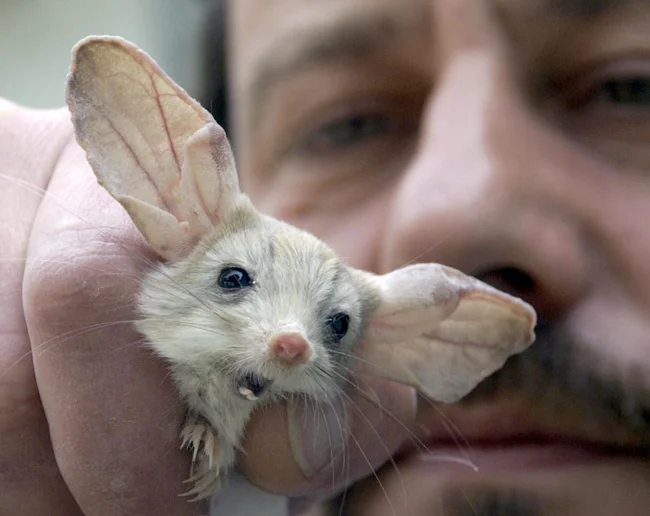
Note that the rodent's ears are permeated with blood vessels. Thanks to this, the locators help to dissipate heat, working as a radiator. A very relevant ability for the desert!
To preserve the population, jerboas have not only improved their hearing, but also their reproductive abilities. The female gives birth to two litters of jerboas per year, and each can contain from 2 to 6 long-eared ones. With such a rapid pace, there is no talk of any long-term contribution to the offspring: they drink milk for a month - and go ahead, dig their own holes and develop their piece of the desert.












